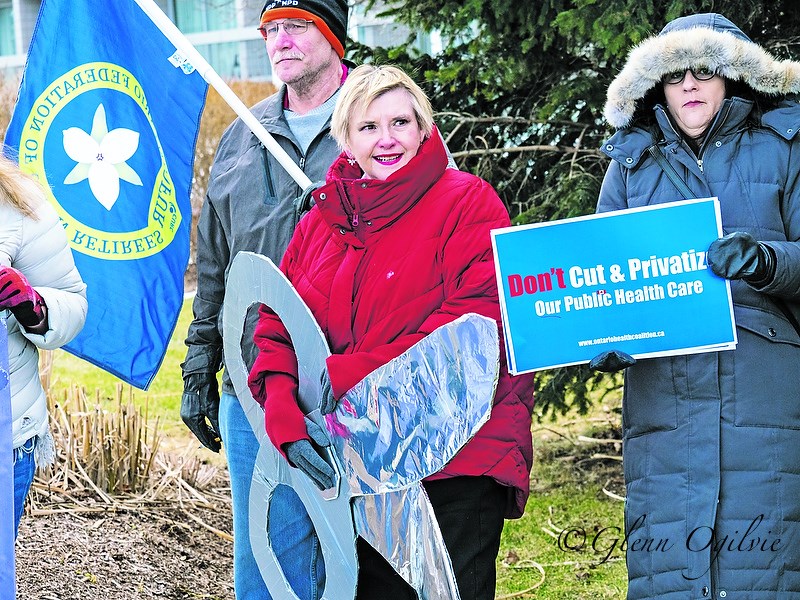Cathy Dobson
Ontario’s aging population is crying out for more government investment in long-term care beds and trained staff, say members of the Sarnia-Lambton Health Coalition.
About 33,000 people in Ontario are waiting for a long-term care bed, and that number grows as seniors outnumber children for the first time in Canadian history, chairperson Shirley Roebuck said.
Roebuck unveiled a new report called Situation Critical compiled by the Ontario Health Coalition last week.
It claims Ontario has cut more hospital beds than any jurisdiction in the developed world and has dropped to the bottom of the ranking in hospital beds per capita.
“Everyone is rather shocked to read the results of the report,” Roebuck said. “We have a province-wide epidemic of inadequate care.”
The Ford government made an election promise to create 30,000 new long-term care spaces. If it happens, that would be the first significant increase in long-term care placements since 2003, according to the coalition.
But beds without staffing don’t provide good care, said Roebuck.
The coalition’s study cites a CBC report that found a 129% increase in resident-on-resident abuse between 2011 and 2016.
“Nursing home staff report they are short of staff almost on a daily basis, so people are expected to do the impossible,” said Roebuck.
Aggression and verbal abuse is increasing in nursing homes as well as “a small level” of sexual assault, she said.
Sarnia is no different from the rest of the province when it comes to needing more long-term care staff, said Julie Sexton, a local registered nurse and president of her bargaining unit.
“Speaking for myself, I love working in long-term care,” she said during a press conference. “You want to take time to nurture relationships and we try to make time when we can.”
But the need for more staff is dire, she said.
“Residents living in long-term care homes today are medically complex and frail, and they are much sicker than before.”
Many nursing homes aren’t designed for complex care and lack nurses trained for dialysis, palliative care and pain management, she said.
The coalition is calling for a minimum standard of care higher than the 2.7 hours a day per resident it estimates is currently provided.
The Ontario Nurses’ Association also wants a minimum average of four hours per day of hands-on nursing care and personal support, said Sexton.
“Even when there has been one tragedy after another in long-term care homes, the evidence shows nursing and personal care levels have been declining instead of rising,” she said.
“Our mothers, fathers and grandparents deserve much better.”
Lynne Withers, a nurse practitioner with 20 years experience in local long-term care, said staff is regularly “grabbed, pinched and pulled.”
Statistics for Sarnia-Lambton weren’t available, but Withers said she has witnessed rising levels of aggressive behaviour as acuity rises among residents.
Sarnia-Lambton’s 10 long-term care homes have the same understaffing problems as the rest of Ontario, but with one exception, said Withers.
Sarnia-Lambton is one of the few jurisdictions in which every home has a Behavioural Supports Ontario (BSO) team to deal with at-risk residents with dementia, mental health and other behavior problems that tend toward aggression.
“I was very surprised to see that,” Roebuck said.
The report was released on Jan. 22. Two days later the Coalition organized a small rally outside the Holiday Inn as provincial officials held a pre-budget public input session in Point Edward.
